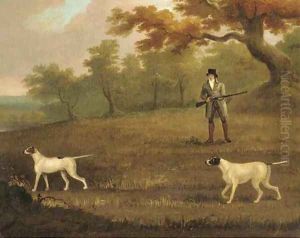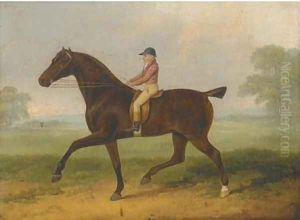John Nott Sartorius Paintings
John Nott Sartorius, born in 1759, was a prominent British painter known for his specialization in equine, hunting, and sporting scenes. Coming from a family with a strong artistic lineage, he was the son of Francis Sartorius and the grandson of John Sartorius, both of whom were also acclaimed artists in the genre of horse painting. This background provided him with a rich heritage and a deep understanding of the artistic and technical aspects of equine art, which he would go on to refine and make his own throughout his career.
Sartorius flourished during a period when the British gentry's interest in horse racing, hunting, and other country sports was at its zenith. This era, spanning the late 18th and early 19th centuries, saw a burgeoning demand for sporting art, creating a niche that Sartorius expertly filled. His works are characterized by their detailed depictions of horses and dogs, vibrant portrayal of the British countryside, and the dynamic representation of sporting events, which he rendered with accuracy and vitality. Unlike some of his contemporaries who might have leaned more heavily into idealization, Sartorius was noted for his dedication to realism and the meticulous portrayal of individual animals, often capturing their unique characteristics and the nuances of their movements.
Throughout his productive career, John Nott Sartorius enjoyed the patronage of prominent figures of his time, including members of the aristocracy and well-to-do sportsmen, which attests to the high regard in which his art was held. His works were widely collected and remain sought after by collectors of sporting and equine art to this day. Despite the specificity of his subject matter, Sartorius's ability to evoke the excitement and beauty of the sporting life through his paintings has earned him a lasting place in the canon of British art.
John Nott Sartorius passed away in 1828, leaving behind a legacy that has ensured his position as a significant figure in the history of British sporting art. His contributions have been recognized in numerous exhibitions and retrospectives dedicated to the genre, and his works continue to be admired for their technical skill, historical value, and the insight they provide into the sporting enthusiasms of his era.

